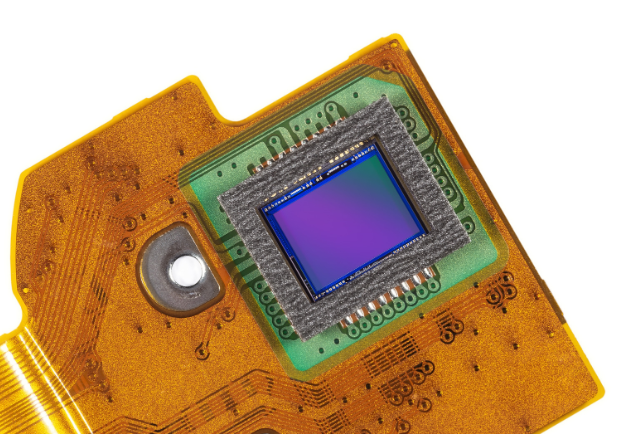Polyimide PCBs are a popular printed circuit board material thanks to the flexibility and strength it offers during PCB fabrication. What distinguishes it from the more standard FR44 material that is most commonly used in printed circuit board manufacturing?
When you are ready to fabricate and manufacture printed circuit boards, the functionality of the end product generally dictates what materials are required for assembly. Printed circuit boards for aerospace, for instance, generally require more advanced materials that ensure their functionality in extreme conditions and for the safety of the people using them. Factors like heat resistance and flexibility can play a vital role in these scenarios, but generally cost more as a result. Printed circuit boards for commercial devices, like cell phones and televisions, rely on less expensive PCB materials.
In this blog, we go over some of the basic distinctions you need to make when deciding to use polyimide PCBs, and whether it is the right fit for your project.
What is the Difference Between Polyimide PCBs and FR-4 PCBs?
One of the most common materials used in printed circuit board manufacturing is FR-4 (Flame Retardant Level 4). A composite made out of glass fiber and epoxy and laminated with copper foil, it is perfect for standard applications thanks to having nearly no water absorption, high mechanical values, excellent insulating properties and relatively good resistance to heat.
While this material may work for standard electronic devices, some scenarios are anything but. FR-4 printed circuit boards are rigid, making them difficult to fit into some devices once they have been manufactured. While they have good resistance to heat, they aren’t designed for extreme temperatures and can melt (the “FR” designation does not denote that the material is compliant with UL94V-0, the standard for the safety of flammability of plastic materials for parts in devices and appliances testing).
FR-4 materials work well for many of the common issues facing printed circuit board manufacturing today, such as damage incurred through humidity. But by no means is it a universal choice. For flexible printed circuit boards or flex-rigid printed circuit boards, polyimide PCBs tend to be a better choice.
Types of Polyimide PCBs
Polyimide PCB material is made of synthetic polymers containing imide monomer structures. They are generally used in the construction of flex PCBs. Flexible printed circuit boards, true to their name, can bend or twist. This makes them an excellent choice for wearable technology, or unconventional casing that can’t house a larger printed circuit board.
Chemicals and additives used in the process of creating this material can create several variations that are ideally suited to difference scenarios. Some types of polyimide PCBs include:
Pure Polyimides
One of the oldest types of polyimide PCB material, pure polyimides are also one of the simplest kinds. Without additions like brominated flame retardants, this material is stable and has strong resistance against thermal stability and temperature change, and its filmy structure makes it extremely flexible.
Third Generation Polyimides
An updated version of pure polyimides, this material contains what pure polyimide does not: flame retardants. While this makes this type of printed circuit board less likely to cause electrical fires, it lacks the thermal stability of pure polyimides. It is also the easiest and least expensive to produce, making it a suitable option for mass manufacturing due to lower temperatures and times requiring for curing.
Low-Flow Polyimides
Of all of the polyimide materials, low-flow polyimides have the least amount of flexibility. However, it is significantly more resistant to harsh conditions that traditional flexible PCBs, making it suitable for the most extreme conditions.
Filled Polyimide
This material contains an extra filler that helps reduce resin shrinkage that protects a printed circuit board from curing proceedings. It has a long life, is less brittle than rigid printed circuit board materials, and is resistant to heat.
Advantages of Polyimide PCBs
Although they may be more expensive than typical FR-4 materials, polyimide material is adept at conforming to unusual environments that would test the limits of more rigid printed circuit boards. Some of the many advantages to polyimide PCBs include:
Durability – Rigid printed circuit board material may be hard to the touch, but this very factor is one of the biggest weaknesses of this kind of board. After years of use, these printed circuit boards can succumb to stress and break after repeated usage. While the filmy nature of polyimide printed circuit board material may appear at first to be flimsy and weak, this serves as a major advantage against physical stress. Given the extreme conditions of aerospace printed circuit board manufacturing, flexible printed circuit boards are vital for the ongoing success of everything from flights, space travel, satellites, and military purposes.
Thermal Stability – Polyimide materials can be subjected to a wide spectrum of extreme conditions while functioning perfectly. While materials like FR-4 reach their glass transition temperature more quickly, flexible printed circuit boards can be subjected to temperatures of up to 260°C, depending on the type of polyimide it is composed of. Additionally, the thermal stability of polyimide materials makes it resistant to the kinds of thermal damage that can occur during repairs.
Chemical Resistance – A major benefit to using polyimide materials is their resistance to corrosive chemicals that can cause erosion or other damage to a printed circuit board. This makes them vital for these applications.
Tensile Strength – Unlike rigid printed circuit board materials, flex PCBs have a level of elasticity that makes them able to support higher maximum loads without breaking or cracking. With the exception of low-flow polyimides, they can be twisted and turned to suit their environment.
Flexibility – Most consumer devices are built around printed circuit boards and other components that they house, giving them a rectangular structure. Not all devices, however, are suitable for this shape. Polyimide materials don’t have to be housed in conventional shapes. This has been a major boon for wearable technology and medical devices, which may have to conform around the shape of a human body to be effective.
Applications of Polyimide PCB Materials
The invention of the flexible printed circuit board has had a number of groundbreaking applications across a spectrum of industries.
Military PCBs
Keeping peace requires machines that are 100% operational with high functionality and minimal downtime. Flexible printed circuit boards can operate in extreme conditions for long periods of time, and are used for purposes such as:
- Microwave processing systems
- Defense navigation systems
- Power distribution systems
Aerospace PCBs
From commercial flights to spacecraft, polyimide materials are a natural fit for long-term operation in turbulent, high-temperature use.
- Full authority digital engine control
- Satellites
- Electronic flight instruments
- Communication systems
Medical PCBs
Class 3 printed circuit boards refers to any board that meets the IPC’s certification of quality, generally applied to machines that put lives at stake. Medical printed circuit boards often use flex or rigid-flex materials thanks to their longevity and resistance to chemicals and other interference.
- MRI machines
- Ultrasound equipment
- Wearable health monitoring devices
Commercial PCBs
Although many printed circuit boards for commercial use continue to rely on FR-4 materials, flex PCBs can be a boon for many burgeoning industries. With the need for higher computing power and the rise of wearable technology, they are becoming more common in the devices we keep around our home.
- Smart watches
- Video game systems
- High-end televisions
Telecommunication PCBs
People across the globe have come to depend on cell phones and a good internet connection to go about their lives, and losing access to these can be disastrous. Telecommunications rely on polyimide printed circuit boards to provide seamless access to billions of people every day.
- Cell towers
- Phone switching systems
- VoIP devices
Flexible Printed Circuit Boards with Imagineering
Imagineering specializes in providing the best Class 2 and 3 printed circuit board fabrication, delivering best-in-class results on time, every time. Our AS9100D certification ensures our commitment to quality regardless of the project at hand. Contact us for more information about our services.


